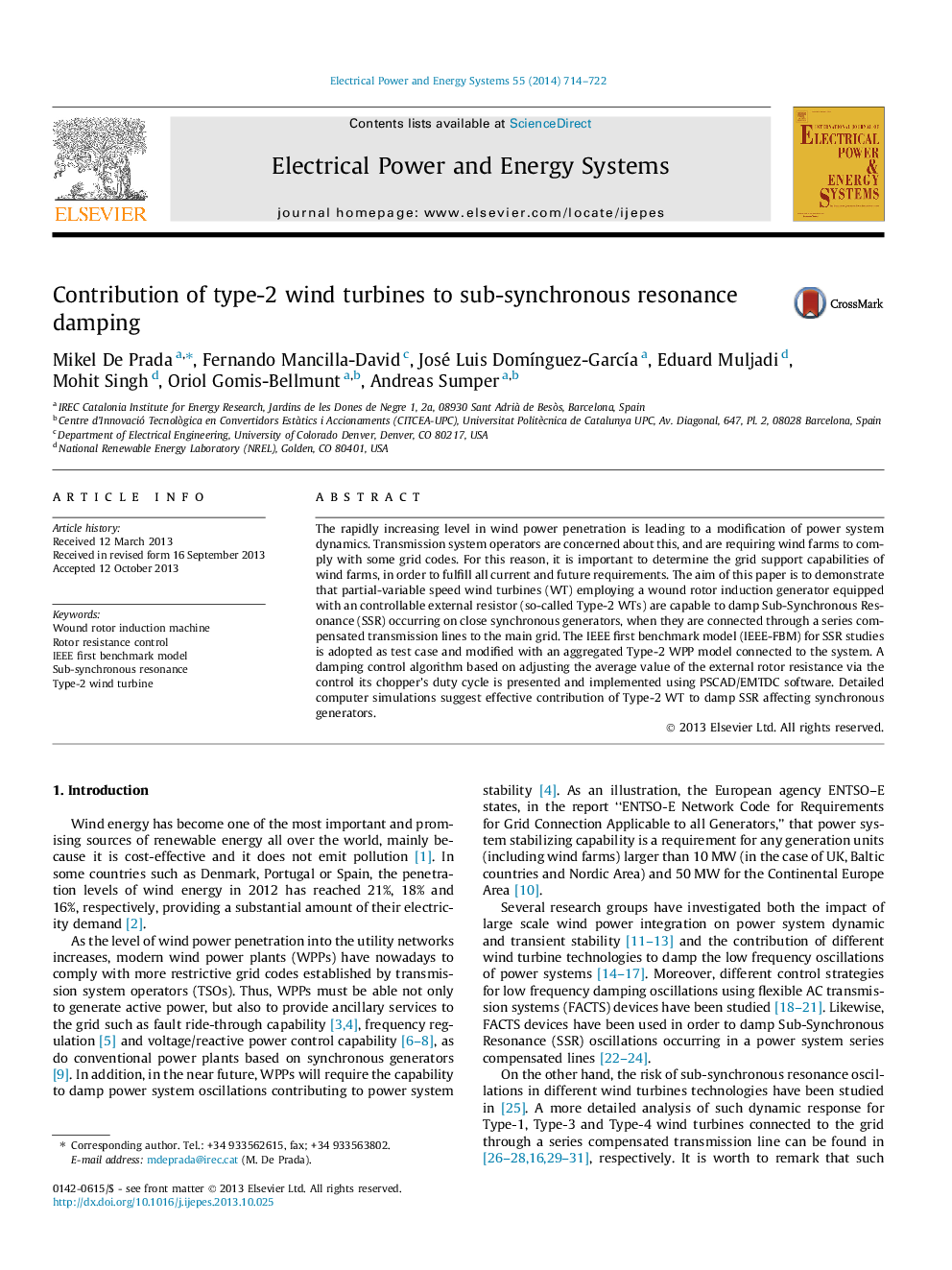| Article ID | Journal | Published Year | Pages | File Type |
|---|---|---|---|---|
| 6860628 | International Journal of Electrical Power & Energy Systems | 2014 | 9 Pages |
Abstract
The rapidly increasing level in wind power penetration is leading to a modification of power system dynamics. Transmission system operators are concerned about this, and are requiring wind farms to comply with some grid codes. For this reason, it is important to determine the grid support capabilities of wind farms, in order to fulfill all current and future requirements. The aim of this paper is to demonstrate that partial-variable speed wind turbines (WT) employing a wound rotor induction generator equipped with an controllable external resistor (so-called Type-2 WTs) are capable to damp Sub-Synchronous Resonance (SSR) occurring on close synchronous generators, when they are connected through a series compensated transmission lines to the main grid. The IEEE first benchmark model (IEEE-FBM) for SSR studies is adopted as test case and modified with an aggregated Type-2 WPP model connected to the system. A damping control algorithm based on adjusting the average value of the external rotor resistance via the control its chopper's duty cycle is presented and implemented using PSCAD/EMTDC software. Detailed computer simulations suggest effective contribution of Type-2 WT to damp SSR affecting synchronous generators.
Keywords
Related Topics
Physical Sciences and Engineering
Computer Science
Artificial Intelligence
Authors
Mikel De Prada, Fernando Mancilla-David, José Luis DomÃnguez-GarcÃa, Eduard Muljadi, Mohit Singh, Oriol Gomis-Bellmunt, Andreas Sumper,
